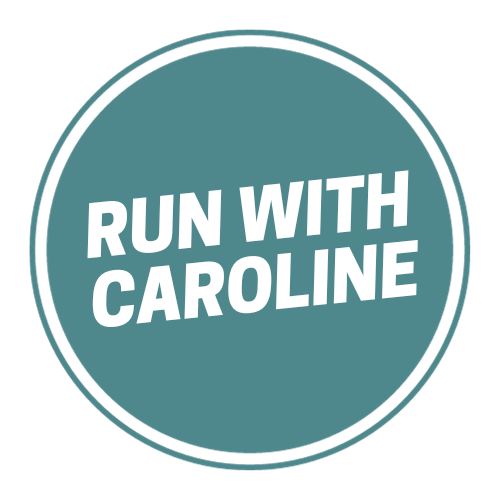Effective pacing can make a huge difference to your race time.
In this guide we’ll share some tips on how to pace your run, with a view of lifting the lid on a running topic that can baffle some runners.
Every runner has experienced it.
You set off on your run feeling fresh so you decide to run a little faster than normal, then half way through you start to flag.
The lactic acid starts to pool in your legs and they gradually turn to jelly.
It’s either continue on with heavy legs, or cut your run short and hobble home.
Unfortunately, this scenario is all too common for a lot of beginner runners.
It’s a real learning curve when judging your pace on a run!
Effective pacing doesn’t have to be complicated though.
Whether you’re looking to achieve a PB or simply run at a more consistent pace to avoid burnout, in this guide we’ll share some simple tips for effective pacing.
In this guide we’ll explore:
- What is running pace?
- Why is running pace important?
- How to keep a constant pace while running
- How to pace your long run
- How to track pace when running
- How to pace your run: 4 simple tips for effective pacing
Ready?
Let’s go!

What is running pace?
Think about a time during a run when you don’t know whether you’re running too fast or slow.
Have you ever wondered how fast you should be running when all you have to rely on is your hear rate or breathing?
This is where running pace comes in. Running pace is essentially how fast you’re running.
It’s typically expressed as the average amount of time it takes for you to run one mile (or a kilometre) during a longer run.
Related: 8 ways to run for longer without getting so tired
Why is running pace important?
Pacing is one of the most important things to master, but is often overlooked my many runners.
While you don’t want to get bogged down with numbers, running pace is important because it can help you gauge how long it will take to run a certain distance.
And perhaps more fundamentally, how to stray on track when running.
Pacing is also a great fitness marker.
You can track incremental improvements over time which can be one of the most rewarding parts of being a runner.
Related: How to run a 10k in 60 minutes or less

Related: Heart rate when running: The complete guide
How to keep a constant pace when running
In order to keep a constant pace when running, you need to stick to your desired pace during training.
Calculating your pace is a useful way to determine how to pace your run and how fast you should be running.
There are many ways to calculate your pace, but the simplest and most straightforward is to use a running pace calculator.
There are a lot of pace calculators online that can help you to calculate your pace for 5k, 10k, half marathon and marathon distances.
Here are a few of my favourites:
Related: Running VO2 Max charts: What is good VO2 Max for my age and gender?
How to pace a long run
As discussed above, how to pace a long run will depend on the distance you are running.
Don’t be tempted to run at a 5k race for a 10k or half marathon, for example – there’s a reason why your 5k pace is much faster as you’re not covering as many miles.
Similarly, if you’re running a race over hilly terrain, your pace will be slightly slower and mixed than what it would be on flat roads.
In order to work out your pace for a long run, I suggest you use a running pace equivalency calculator like the Luke Humphrey Running pace calculator.
This will help you determine your race pace from 5k to marathon distance.
Related: How to use negative splits to race faster (and happier)

How to track pace while running
Have you ever noticed that elite runners rarely wear running watches to dictate their pace?
This is because they have become so good at judging their pace instinctively.
If you’re not an elite runner like the rest of us and need more help to track your pace on your run, then I suggest you invest in GPS technology.
GPS is so effective because it tracks every second of your run and gives you real time data about your running performance so you can keep tabs on it throughout.
Most running apps nowadays have GPS technology which are free to download.
I highly recommend MapMyRun or Strava.
If you’re not a fan of tracking your run on your phone, I suggest you invest in a sports watch with GPS technology.
The Garmin Forerunner 235 running watch is my favourite as it’s quick and simple to use and provides accurate data on your run.
It’s also a huge plus to be able to quickly check your pace on your wrist instead of having to dig out your phone each time. And no one likes a sweaty phone!
Related: 5 of the best 5k to 10k running apps
How to pace your run: 4 simple tips for effective pacing
#1 Slow down
The first step to get to grips with pace is to slow down.
If you’re used to running at a certain speed, learning how to slow down is one of the hardest things to master.
It’s important to slow down because you don’t want to burn yourself out at the beginning of your run. If you start out too hard, your run can quickly become a very frustrating experience.
The golden rule is to run a pace where you can easily hold a conversation without getting out of breath.
If your breathing becomes laboured, it’s a sign to slow yourself down.
Related: How to slow yourself down when running: 4 simple tips
#2 Practice pacing during training
Practice pacing every time you go out for a run and get used to it and get into the habit of keeping tabs on it.
It’s surprising how much your pace can change in a run. It can easily be impacted by environmental factors such as the weather.
The time of day in which you choose to run and how your body is feeling on the day of the run can also impact your pacing.
So it’s good to get a variety of runs under your belt to really get used to how it feels.
On the day of your run, adrenaline is bound to take over. You’ll be tempted to push yourself further, but try not to do this as you’ll end up setting off too fast.
Don’t compare yourself to other, faster runners on the day either.
Have faith in your pacing that you’ve perfected during training and try not to worry – it’s your race and you’ll smash it!
#3 Listen to your body
Whilst it’s good to use technology to track your pace and see all important improvements, it’s also a good idea to take some time to really tune into your body and what it’s telling you.
During your next easy run, check in on your body while you run. A full body check looks at everything from your breathing to your stride length.
Start by listening to the sound of your feet when they hit the ground, then your breath.
These all important cues are what it sounds and feels like at an easy pace. When those cues change, your pace has probably changed.
In order to tune into your body, leave your GPS watch, phone and headphones at home. Listening to your body is really about paying attention to your breath and body.
Related: Running by feel: 5 life changing benefits of running without a watch
#4 Don’t compare yourself to others
It’s all too easy to compare yourself to the runner who looks like they have it all figured out when they overtake you on a run.
What you don’t see is all the years of training they have probably invested to get to where they are.
There’s a danger in comparing yourself to others when you’re learning how to pace yourself. It’s ok if you need to run less or run slower.
If you follow what someone else is doing, you may end up running too fast or too many miles, so don’t be afraid to run your own race and have faith in what you’re doing.
Ultimately, the only person you’re trying to do better than is yourself.
- 5 things I wish I’d known before returning to running - March 3, 2024
- Running 20 minutes a day: Benefits + how to start - January 27, 2024
- How to run your first 2 hour half marathon - January 16, 2024

